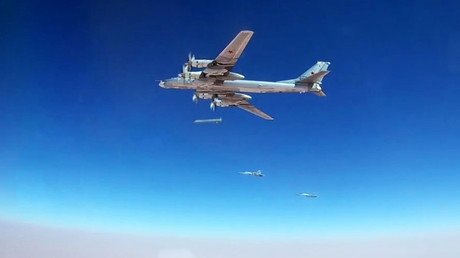‘Semblance of normal life’: Syrian city of Deir ez-Zor slowly recovers from ISIS siege
The lifting of the siege around the city of Deir ez-Zor by the Russian Air Force-backed Syrian Army has tremendously eased the life of people there, but it’s still just a semblance of normal life, as the full eradication of Islamic State terrorists still lies ahead.
Before the siege was lifted, Deir ez-Zor had been under a tight blockade and constant shelling from Islamic State (IS, formerly ISIS/ISIL) terrorists for more than three years. Supplies were delivered solely by air, through airdrops by military cargo planes and infrequent and daring helicopter flights, used mainly for delivering reinforcements to the enduring garrison of the besieged enclave.
Siege survivors told RT’s Murad Gazdiev that the staple diet for the past year was za’atar (a mixture of herbs usually used as spice) mixed with water because the ingredients for proper bread were scarce. Zaatar is a traditional Middle Eastern spice mainly made of oregano, so the main ration of many residents in Deir ez-Zor was effectively dried grass with water.
Prices of the most common food items had soared in the city, which was cut off from the other government-held areas. People sold everything of value, even their cars and property, to secure basic survival for their families. A local man told RT how he sold his car when the siege had just begun for 50 kilograms of sugar, which was then available only on the black market.
No fresh fruit or vegetables were available to the city’s residents and many young children, born during the siege have never tasted them before this September, when the IS blockage was finally broken by the Syrian Army with Russian air support.
‘We’ve been dead already’: Deir ez-Zor residents recall horrors of ISIS blockade https://t.co/SOSWuFLXSSpic.twitter.com/EKr0jiTrJ7
— RT (@RT_com) 15 сентября 2017 г.
Syrian and Russian humanitarian aid was immediately sent to the exhausted residents when the regaining of control over the strategic Deir ez-Zor–Palmyra highway allowed establishing a steady land supply route to the city.
As humanitarian aid began flowing into the Syrian city, life began to return to something like normalcy, but Gazdiev reports that it is still only a semblance of peace, with the dangers of war being very close. Some 15 percent of the city is still under IS control. While the complete liberation for the city is expected within several weeks, there are still swathes of land controlled by IS in the surrounding Deir ez-Zor province, which the Syrian forces aim liberate in full.
Some 87.4 percent of Syria is now free of Islamic State terrorists, the Russian Defense Ministry said on Thursday.













